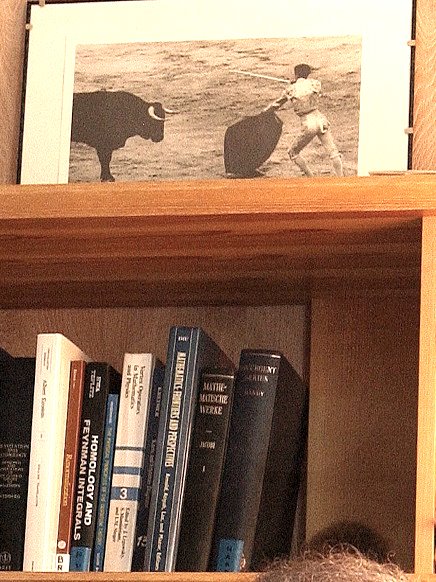Common Sense
On the mathematician Kolmogorov:
“It turns out that he DID prove one basic theorem that I take for granted, that a compact hausdorff space is determined by its ring of continuous functions (this ring being considered without any topology) — basic discoveries like this are the ones most likely to have their origins obscured, for they eventually come to be seen as mere common sense, and not even a theorem.”
— Richard Cudney, Harvard ’03, writing at Xanga.com as rcudney on May 14, 2003
That this theorem is Kolmogorov’s is news to me.
See
- the discussion of the Gelfand representation theorem on p. 397, “A Mad Day’s Work: From Grothendieck to Connes and Kontsevich,” by Pierre Cartier, Bulletin of the American Mathematical Society, Vol. 38 (2001) No. 4, pp. 389-408,
- a remark on Gelfand’s work on page 467 of the above AMS Bulletin issue,
- V. S. Varadarajan‘s discussion of the “Hilbert-Gel’fand principle” on page 11 of “The Concept of a Supermanifold” and the “Gel’fand Principle” on page 11 of “What Is the Geometry of Physical Space?,” and
- the excellent 1963 textbook Introduction to Topology and Modern Analysis, by George F. Simmons, chapters 13 and 14.
The above references establish that Gelfand is usually cited as the source of the theorem Cudney discusses. Gelfand was a student of Kolmogorov’s in the 1930’s, so who discovered what when may be a touchy question in this case. A reference that seems relevant: I. M. Gelfand and A. Kolmogoroff, “On rings of continuous functions on topological spaces,” Doklady Akad. Nauk SSSR 22 (1939), 11-15. This is cited by Gillman and Jerison in the classic Rings of Continuous Functions.
There ARE some references that indicate Kolmogorov may have done some work of his own in this area. See here (“quite a few duality theorems… including those of Banaschewski, Morita, Gel’fand-Kolmogorov and Gel’fand-Naimark”) and here (“the classical theorems of M. H. Stone, Gelfand & Kolmogorov”).
Any other references to Kolmogorov’s work in this area would be of interest.
Naturally, any discussion of this area should include a reference to the pioneering work of M. H. Stone. I recommend the autobiographical article on Stone in McGraw-Hill Modern Men of Science, Volume II, 1968.






























